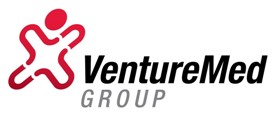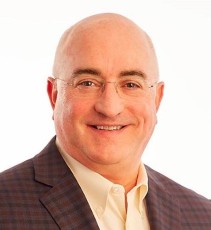
© CEOCFO Magazine -
CEOCFO Magazine, PO Box 340
Palm Harbor, FL 34682-
Phone: 727-
Email: info@ceocfocontact.com


Search





Business Services | Solutions
Medical | Biotech
Cannabis | Hemp
Banking | FinTech | Capital
Government Services
Public Companies
Industrial | Resources
Clean Tech
Global | Canadian
Lynn Fosse, Senior Editor
Steve Alexander, Associate Editor
Bud Wayne, Marketing
& Production Manager
Christy Rivers -






 Print -
Print - VentureMed’s FLEX Vessel Prep™ System safely and effectively modifies Obstructive Plaque and Stenoses to facilitate Delivery of Drug Therapies to treat Peripheral Arterial Disease
VentureMed’s FLEX Vessel Prep™ System safely and effectively modifies Obstructive Plaque and Stenoses to facilitate Delivery of Drug Therapies to treat Peripheral Arterial Disease
 J. Robert Paulson, Jr.
J. Robert Paulson, Jr.
President & CEO
VentureMed Group, Inc.
www.VentureMedGroup.com
Contact:
KATHLEEN LEITH
(763) 296-
Interview conducted by:
Lynn Fosse, Senior Editor
CEOCFO Magazine
Published – January 11, 2021
CEOCFO: Mr. Paulson, what is the overall vision at VentureMed Group Inc? What is your focus right now?
Mr. Paulson: The overall vision is to improve outcomes for patients suffering from peripheral arterial disease, and extend the time between repeat arteriovenous access procedures for hemodialysis patients, with a device that helps to safely and effectively prepare a vessel to optimize delivery of the definitive therapy.
CEOCFO: What are the challenges in preparing and what have you devised that will help?
Mr. Paulson: One of the big challenges in treating peripheral vasculature disease is that many of the therapies and devices used today were developed for use in coronary vessels, and peripheral vessels have a different biology and are in a different anatomical location. Historically, endovascular, or minimally invasive, approaches to open obstructed peripheral arteries have resulted in high levels of restenosis or reoccurrence of the vessel occlusion.
Over the past several years, drug therapies have emerged as an effective definitive therapy to treat peripheral arterial disease and maintain arteriovenous access for hemodialysis. Drug coated balloons and drug-
Over the years, a variety of devices have been used to open occluded vessels, including high pressure angioplasty balloons, specialty angioplasty balloons with wires or blades wrapped around the balloon, and atherectomy devices that debulk or remove plaque. These balloon-
If a dissection is severe enough, a stent, which is a small metal scaffold, must be deployed to repair the dissection and keep the vessel lumen open. Peripheral arteries, unlike coronary arteries where the chest wall protects the vessels from outside stress, are surrounded by muscle and bone in the legs – as people twist, torque, and turn, peripheral arteries undergo external stress and peripheral stents can fracture and collapse which then re-
What has been missing is a simple, effective, easy-
CEOCFO: How does the Flex Vessel Prep System work?
Mr. Paulson: The FLEX System is used as part a traditional endovascular approach, and is designed to create linear, controlled-
The FLEX treatment element, located on the distal end of the device, has three flexible struts. Along the proximal end of each strut is a microsurgical blade with a cutting height of approximately 0.25mm. When the treatment element is deployed in the vessel lumen, it expands with a radial force of just over one atmosphere of pressure, which allows the microsurgical blades on the struts to engage in the obstructive lesion or stenosis, but not with enough force to stretch, tear or dissect the vessel.
Once the treatment element is deployed, the FLEX device is pulled back (in a retrograde motion) from the distal to the proximal end of the obstructive lesion or stenosis. The three struts of the FLEX treatment element function dynamically and independently of the other – each strut individually “flexes” like skis on a ski slope during the pullback, adapting to each patient’s vessel anatomy and morphology. The FLEX device creates continuous, controlled-
The improved vessel compliance allows the definitive drug-
This approach contrasts with other vessel preparation devices that are engaged at the proximal end of obstructive lesions and are advanced by pushing forward through the lesion, which is a bit like pushing on a rope through a cylinder, without knowing what lies ahead of you. This approach can challenge operators’ ability to visualize and control the path and location of the vessel preparation devices.
CEOCFO: How did this method come about? Was it that someone had a eureka moment one day and you then you had to figure out how to do it?
Mr. Paulson: VentureMed’s founder, Dr. John Pigott, is a vascular surgeon. Dr. Pigott performed thousands of endovascular peripheral procedures over the course of his career and, for many years, had used atherectomy devices to prepare vessels and modify plaque before delivering the definitive therapy. Atherectomy procedures can be challenging and complicated to perform due to the variable and unpredictable nature of peripheral arterial disease, which can include areas of calcified plaque, soft (neointimal) plaque, and mixed plaque morphology in the same patient. The mechanism of action for atherectomy devices varies – some rotate or sand-
Dr. Pigott realized cutting atherectomy devices, which are used in both calcified and soft plaque, were making cuts with a depth of 0.25-
Dr. Pigott believed there had to be a simpler, easier approach given the objective was to create controlled-
CEOCFO: Where are you in the development and/or commercialization process?
Mr. Paulson: The FLEX Vessel Prep System is FDA-
CEOCFO: What is the market opportunity? How many procedures might be done annually that could use your device?
Mr. Paulson: The treatment of peripheral arterial disease is a three-
An important part of this opportunity is the fact that peripheral vascular stents, used in to repair the tears and dissections from traditional vessel preparation procedures, frequently re-
CEOCFO: What has been the response from doctors/surgeons/
Mr. Paulson: The FLEX device is simple, intuitive and makes sense. The simplicity of the FLEX device contrasts with the complexity of other vessel prep devices in the market. That said, physicians often express an initial skepticism that FLEX micro-
Long (≥15 cm) diffuse, mixed morphology lesions which are challenging to treat with other vessel preparation devices, and often requires the use multiple devices; and
In-
While our real-
CEOCFO: What type of training might a physician need to use the device?
Mr. Paulson: One of the most compelling features of the FLEX System is simplicity -
Because FLEX is used as part of the same endovascular procedures performed by these physicians every day, there is no need for extensive training sessions or cadaver workshops to learn how to use the device. In preparation for commercial launch of our second-
CEOCFO: You personally have as long history in the industry. What have you learned that helped you navigate through so far and that you will be able to continue to draw on as the commercialization is happening? What have you learned over the years?
Mr. Paulson: So much! Over the course of my career, I have had the opportunity to work with teams that created, designed, developed, and commercialized a variety of sophisticated and complex medical devices and systems, including image-
I was attracted to VentureMed by the large unmet clinical need, and the simple elegance of the FLEX System. While the device is simple and straightforward, the market is complex and competitive. Successfully commercializing an innovative new device like FLEX in today’s rapidly evolving healthcare market requires a disciplined design and development process on the front-
The most important ingredient in this recipe for success is people – recruiting and retaining individuals with the background, skill sets, experiences, and passion to execute these inextricably intertwined strategies. It requires a culture where each member of each functional team is aligned on and committed to a common vision, embraces the challenges and opportunities of bringing a novel device to the market, are not afraid to take risks, communicate candidly and effectively with each other, and trust each other.
Large medical device companies have the resources to recruit and retain large teams of functional experts. In contrast, small venture-
CEOCFO: Are you seeking funding, investment, or partnerships at this point?
Mr. Paulson: We have just begun the process of raising a series C round of capital to support the company’s next phase of commercialization.
CEOCFO: There are so many new ideas today in health. How do you get the attention, particularly obviously, under COVID? What is the key?
Mr. Paulson: The keys are having a value proposition that resonates with physicians and effectively demonstrating your device makes a difference in how physicians treat and care for their patients. While patient safety and improved outcomes are priorities number one and two, the device also must fit within the healthcare economics of physicians’ practices. Healthcare economics involves considerations beyond payment for the device such as lower rates and severity of complications, shorter procedure times (which can mean reduced levels fluoroscopic radiation exposure for physicians and staff), and fewer ancillary devices. For FLEX, that means improving outcomes and reducing the cost and complications of revascularization procedures.
CEOCFO: Is it easier when approaching investors if you are doing something that is understandable, that people can wrap their heads around?
Mr. Paulson: Yes. In the medical device venture capital world, what constitutes a compelling investment opportunity has changed immensely over the past ten to twelve years. Medical device companies today have access to an increasingly smaller share of healthcare venture capital investments as compared to other sectors like specialty pharma, biopharma and biotech, digital health, and tools and diagnostics. A medical device technology must stand-
VentureMed Group, Inc., J. Robert Paulson, Jr., Flex Vessel Prep System, Revascularization, Prepare Vessels for Percutaneous Transluminal Angioplasty, VentureMed’s FLEX Vessel Prep™ System safely and effectively modifies Obstructive Plaque and Stenoses to facilitate Delivery of Drug Therapies to treat Peripheral Arterial Disease, CEO Interviews 2021, Medical Companies, FLEX FIRST in Revascularization, FLEX VESSEL PREP™ SYSTEM, micro-
“An elegantly simple, safe, and effective device with the potential to fundamentally change the way peripheral arterial revascularization and arteriovenous access procedures are performed.”
J. Robert Paulson, Jr.